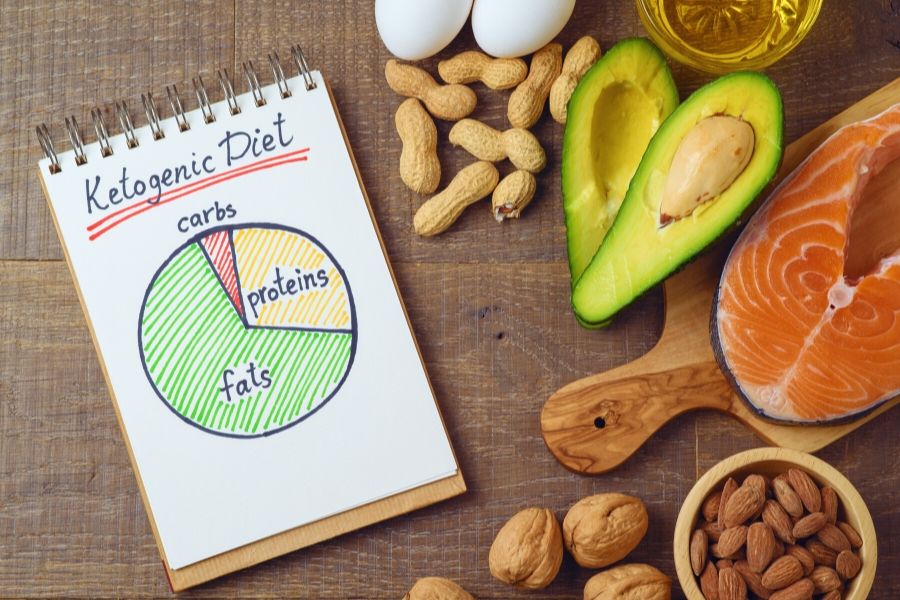Financial results from snack food companies indicate that many people isolated at home during lockdowns have substituted comfort foods for social contact.
 Unfortunately, after the cookies and chips are gone, the broadened hips remain. Figuring out the best course to reset to a healthy weight involves a conversation with a doctor, including the question: what’s the difference between a keto and a low-carb diet?
Unfortunately, after the cookies and chips are gone, the broadened hips remain. Figuring out the best course to reset to a healthy weight involves a conversation with a doctor, including the question: what’s the difference between a keto and a low-carb diet?
Ketogenic Diet Origins
The ketogenic diet was developed in the 1920s as a treatment for seizure disorders in children. Ketosis refers to a metabolic state in which the body burns stored fat as fuel instead of burning blood glucose. Doctors discovered that severely limiting carbohydrate intake (therefore limiting available blood sugar), reducing protein, and substantially increasing fat consumption puts the body into a state of ketosis, lessening the frequency of seizures in children whose medication wasn’t working.
Keto Restrictions and Side Effects
The keto diet is highly restrictive, and because of that, some people find it difficult to maintain. Keto requires followers to consume 70% or more of their calories in fats, reduce protein intake to 20-25%, and take carbs down as low as 10 or even 5%.
The keto diet therefore cuts out many foods that we otherwise consider healthy—fruits, legumes, and whole grains are severely limited to maintain a carb consumption of no more than 50 grams per day.
People who follow the keto diet lose weight, but they also risk significant side effects, such as headaches, nausea, irritability, and constipation (the “keto flu”). The keto diet’s effect of breaking down fats requires the body to eliminate the ketones produced in that process through more frequent urination, which puts pressure on the kidneys and can lead to dehydration and further serious side effects. People who follow keto diets for medical reasons related to diabetes or other health conditions do so under medical supervision and monitoring.
Dry mouth is one of the many keto side effects. Learn more about how to get rid of keto dry mouth.
Low-Carb Diets
The primary difference between a keto diet and a low-carb diet is the ratio of fats, proteins, and carbs that each diet allows. Like keto, a low-carb diet restricts carbohydrate consumption, cutting simple carbs found in white breads, pasta, starchy vegetables, sugary fruits, and highly processed foods. However, it isn’t as severe as the keto diet. The number of grams of carbs allowed per day is fluid and can range from less than 50 and up to 150 grams per day. Furthermore, on a low-carb diet, adherents won’t consume anywhere near as much fat as they would on the keto diet. A low-carb diet allows more variety, boosting protein and vegetable intake. As a result, sticking to a low-carb diet—which includes a greater variety of foods—can be much easier in the long term. It may even stick as a permanent lifestyle, providing many lifelong health benefits.
Always consult your doctor before beginning any diet program to determine your goals and the best way of achieving them while maintaining your good health.
Related Posts:
- 8 Delicious and Keto-friendly Coffee Add-ins
- Are Oranges Keto-Friendly?
- Low-carb Dessert Ideas That You Can Enjoy Guilt-free
- Here Are The 3 Must-Try Diet Plans That Include Wine
- 5 Tips to Help You Maintain a Healthy Weight-Loss Diet
[…] RELATED: What’s the Difference Between a Keto and a Low-Carb Diet? […]